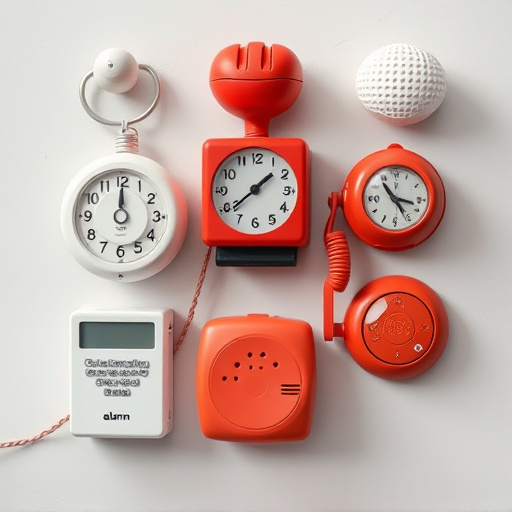Personal alarms offer immediate assistance during emergencies with a distinct Personal Alarm Sound within a defined Coverage Area. Coverage varies by device (50-200m), influenced by environment. Activation methods include manual press or automatic sensors. Devices benefit outdoor enthusiasts, solo individuals, and those seeking enhanced daily security. For effective communication, understand the Coverage Area and choose devices with powerful, unique sounds and adjustable settings for optimal protection in diverse environments. Regular testing, accessibility, battery care, and spare batteries ensure continuous safety.
In today’s fast-paced world, having a portable protection device with emergency alert functionality can be a lifesaver. This comprehensive guide explores the essentials of personal safety devices, focusing on key features like robust Personal Alarm Sound Coverage Areas. We’ll delve into understanding these compact tools and best practices for utilizing them effectively during emergencies. By the end, you’ll be equipped to make an informed decision about your safety.
- Understanding Portable Protection Devices
- Key Features of Emergency Alert Systems
- Evaluating Sound Coverage Areas
- Best Practices for Utilizing Personal Alarms
Understanding Portable Protection Devices
Portable protection devices, often in the form of personal alarms, are compact tools designed to provide immediate assistance and raise awareness during emergencies. These devices emit a loud and distinct Personal Alarm Sound within a defined Coverage Area, ensuring that help can be summoned swiftly. Whether for outdoor adventures, travel, or daily commutes, these portable systems offer peace of mind by enabling users to protect themselves in various situations, from unexpected attacks to getting lost.
The Coverage Area varies among devices, with some offering a radius of several hundred feet, while others may have more limited ranges. Users can activate the alarm manually through a simple button press or, in advanced models, automatically when sensors detect certain events, like sudden movements or falls. This technology is particularly valuable for individuals who enjoy outdoor activities, live or travel alone, or simply want an extra layer of security in their daily lives.
Key Features of Emergency Alert Systems
Emergency alert systems, often incorporated into portable protection devices, are designed to ensure swift communication during critical situations. A key feature is the Personal Alarm Sound, a loud and distinct signal that draws attention and alerts nearby individuals or emergency services. This alarm should be easily audible within a good Coverage Area, typically ranging from 50-200 meters, depending on environmental factors and device specifications.
The effectiveness of these systems also relies on advanced functionality like GPS tracking for precise location identification, automatic fall detection sensors, and long battery life to sustain connectivity during emergencies. These features collectively contribute to the overall reliability and usability of portable protection devices with emergency alerts, making them indispensable tools for personal safety in various settings, from outdoor adventures to everyday urban commutes.
Evaluating Sound Coverage Areas
When evaluating portable protection devices, understanding the Personal Alarm Sound Coverage Area is paramount. This refers to the distance and clarity at which the alarm’s sound can be heard effectively. Factors influencing this include terrain, obstacles, background noise levels, and weather conditions. For optimal safety, ensure the device’s sound coverage area is sufficient to alert those nearby in case of an emergency, even under challenging circumstances.
Consider the environment where you’ll be using the personal alarm. Urban areas with tall buildings might require a broader coverage area compared to quieter suburban or rural settings. Some devices offer adjustable sound intensities and frequencies to cater to different scenarios, enhancing their effectiveness as a safety net.
Best Practices for Utilizing Personal Alarms
When utilizing a personal alarm, it’s crucial to consider your surroundings and potential risks. Aim to choose an alarm with a loud, distinct sound that can be heard clearly over ambient noise, ensuring effective deterrence in crowded areas or during emergencies. The coverage area of these devices varies; select one suited to your space needs, whether you’re indoors or outdoors.
Best practices involve testing the alarm regularly to ensure it’s functioning optimally and keeping it readily accessible. Familiarize yourself with its activation mechanisms—whether a simple button press or a pull-tab—so you can respond quickly in distressing situations. Regularly update the battery to avoid any unexpected failures, and consider carrying spare batteries for added peace of mind.
Portable protection devices with emergency alert systems offer a vital personal safety net, especially in situations where immediate assistance is needed. By understanding key features like robust sound coverage areas and evaluating them based on individual needs, users can maximize the effectiveness of these devices. Best practices for utilizing personal alarms include regular testing and keeping them easily accessible, ensuring you’re prepared to quickly trigger an alert when facing emergencies.
